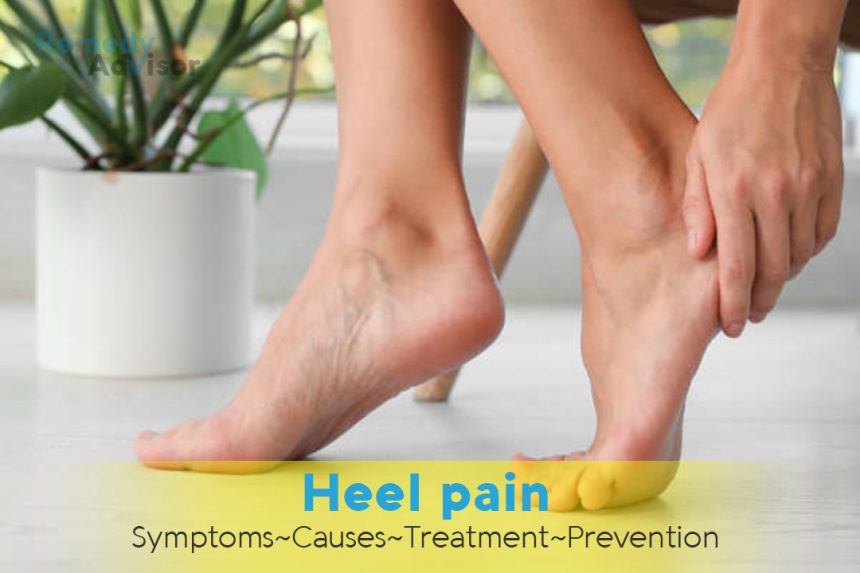What is it
Although runners and other athletes often get painful heels, it can happen to anybody. If the pain originates in the plantar fascia, which is the thick connective tissue under the skin on the bottom of your foot and the sides of the heel, then the condition is called plantar fasciitis. The plantar fascia, which acts as a kind of bowstring for the arch of the foot, can develop small, painful tears under repeated stress.
Other sources of pain may be minute breaks in your heel bone or a heel spur, which is a bony growth on the underside of the heel bone. Tendinitis or bursitis may also be part of the painful heel syndrome.
Symptoms
- Discomfort in the heel first thing in the morning, when you put pressure on your foot.
- The pain may ease up as the day goes on, though it may worsen if you are running or walking.
What causes it
Sometimes there is more than one contributing cause. More commonly, the following factors promote heel troubles.
Bad biomechanics
This is another way of saying abnormalities in your walking or running gait that stress your heel bone and the tissues attached to it. Your heel should be the first part of your foot to hit the ground when you are walking, and ideally the arch distributes your weight toward the outside of your foot and then toward the ball of it. But if your feet roll inward (pronation) or outward excessively, the weight isn’t properly distributed, and the plantar fascia and heel bear too much weight.
Being overweight
Excess pounds stress the heels as does habitually carrying heavy loads.
Growing older
Though no scientific research shows that elder persons are more susceptible to heel pain, it’s possibly true that they are. As you grow elder, the pads that defend the heel from injury, just like pads under a carpet, can wear down and therefore fail to offer the shock absorption they once did.
Frequent running, walking, or tennis playing
These vigorous weight-bearing activities stress the heel, especially if a person also has excessively pronating feet or other biomechanical problems.
What if you do nothing
Heel pain will often clear up on its own though it may take months to do so. However, if pain is severe and you begin limping, over time this can put adverse stress on other body parts, including your ankles, knees, hips, and back.
Home remedies
Rest
If your heel does begin to hurt, rest is the first line of defense. Limit your activities for a few days.
Take over-the-counter anti-inflammatories
Nonprescription NSAIDs (aspirin, ibuprofen, and naproxen) should help reduce pain, though they won’t accelerate healing.
Apply ice
Massage your heel with a small jar filled with ice, or do foot-rollers: roll your heel over an ice-filled plastic jar or a container of frozen juice. After-ward, pull your toes upward with your fingers.
Do some stretching stretches
Tight calf muscles can tighten the fascia and contribute to heel pain.
Cross train
Cross train with non-weight-bearing activities such as swimming, water running in deep water, or bicycling in order to protect the heel while maintaining physical conditioning.
Gradually resume running or walking
Once pain diminishes, slowly return to your previous level of physical activity. Reduce your training intensity if pain returns you need to find a happy medium between rest and activity.
Be patient
It can take months for the problem to go away. However, for nearly everyone, the prognosis is complete recovery.
Prevention
Buy shoes that fit
Make sure they have shock absorbent soles, rigid shanks, and some extra padding in the heels. Good ankle counters are important, too, so your foot doesn’t slip up and down.
If you are overweight, try to slim down
This will take pressure off your tired and overtaxed feet.
Pace yourself
If your feet hurt when you are exercising or taking part in athletic activities, take a break. Find out why they hurt: are you overdoing it, and do your shoes fit properly?
Check your gait
Have an orthopedist or podiatrist check your gait and stance to see if your feet pronate excessively.
Check the surfaces
Avoid exercising on non-resilient surfaces like concrete.
Switch shoes
If you must wear dress shoes for work, wear athletic shoes to and from your place of employment, as well as at home. Discard or repair any shoes with worn-down heels and soles.







